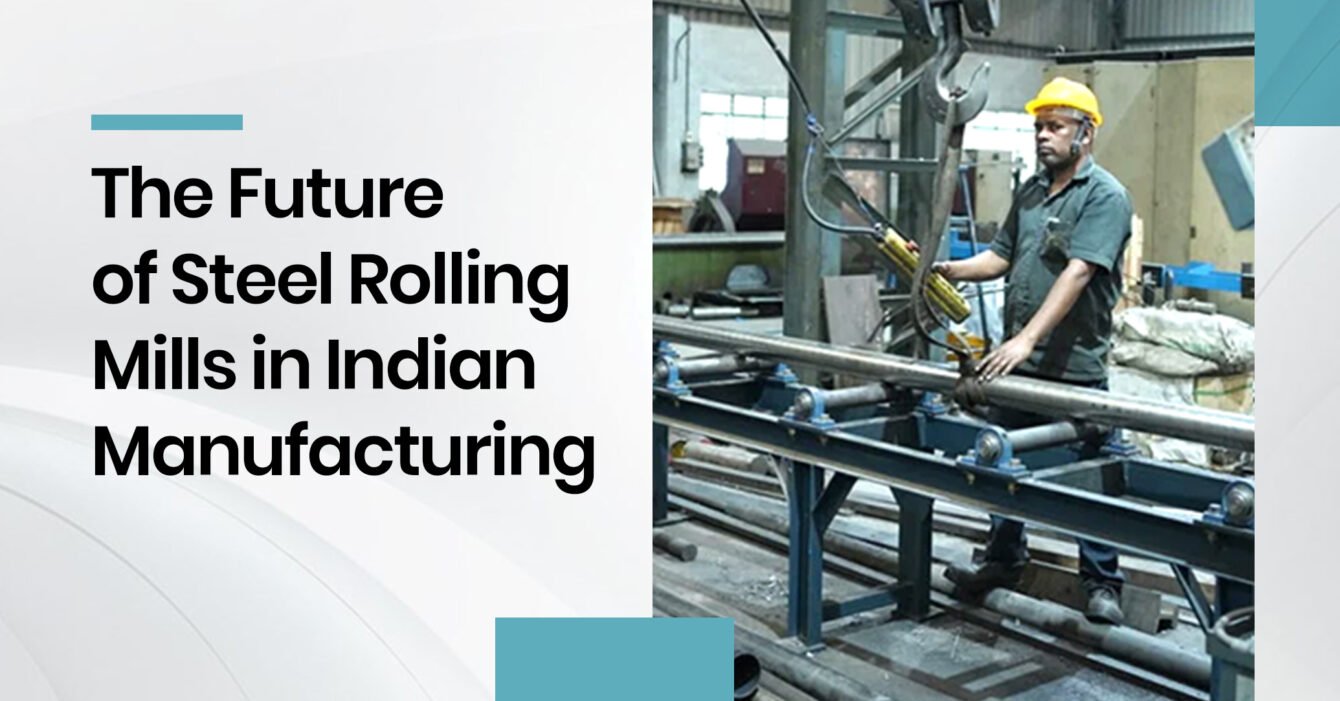Steel isn’t just another product; it’s the backbone of industry, infrastructure, and innovation in any growing economy. In India, rolling mill technology is undergoing a revolution of its own. Behind every beam, rod, or plate lies a complex network of decisions: investment, policy, and technology to build a stronger, smarter steel industry.
Surge of Steel Rolling Mills in India
The domestic demand for Steel Rolling Mills in India is impressive and growing. Per capita consumption is forecasted to more than double from slightly above 74 kg in 2018-19 to 160kg in 2030-31, according to the Indian Brand Equity Foundation (IBEF).
The National Steel Policy furthermore has a target of 300 million tonnes of production ability through 2030-31, with about 142 million tonnes produced in current years.
With such a demand for the unbelievable quantity, infrastructure undertakings (Smart Cities and Gati Shakti), housing targets, automotive manufacturing expansions, and green technology-powered energy transition are contributing factors.
All this demand brings to the fore the rolling of the arteries of steel-making in India that calls for more capacity, efficiency, and precision.
The PLI Effect
To turn steel plans into real output, India is deploying policies that matter. The Production Linked Incentive (PLI) Scheme for speciality steel is transforming the game, encouraging capital investment, cutting import reliance, and financing tech upgrades.
For heavy machinery makers, PLI is a boon. It earns buyers a financial goal for investing in high-tech, value-added steel lines, driving demand for advanced rolling mill equipment from trusted domestic manufacturers.
Sustainability: Rolling Green is the Only Way Forward
Rapid growth and environmental responsibility must go hand in hand. India targets to drop carbon emissions in line with the unit of output by way of 30–35% by 2030, under the National Steel Policy. To deliver that, rolling turbines want to replace conventional blast furnaces towards electric-powered arc furnaces (EAFs), direct reduced iron (DRI), and even hydrogen-based steelmaking.
Methods like EAFs already allow up to 50% steel production from scrap, and breakthroughs like hydrogen reduction and CCUS are no longer a dream. They’re the future-building efforts investors are backing.
Technology: Smarter Mills, Smarter Margins
The modern rolling mill is becoming smarter. AI, predictive maintenance, and real-time analytics are no longer pilot projects; they’re essential tools. These help avoid unplanned downtime, optimise energy use, and improve product consistency.
A nod to Manufacturing Today India’s analysis: India’s mills are becoming digital-first, integrating data, automation, and sustainable manufacturing methods to compete globally. For machine providers, that means creating gearboxes, stands, and automation units that are smart, serviceable, and digitally integrated.
Scaling Up Responsibly: From Local to Global
Ultimately, India is positioning itself as a steel supplier, not just a steel consumer. Export demand is strong, but not without protection. EU regulations like the Carbon Border Adjustment Mechanism are reshaping trade dynamics.
Indian rolling mill firms that invest in cleaner, greener, and digitally optimised facilities will have a competitive edge. Customers overseas see not just Indian volume, but Indian quality with ESG (Environmental, Social, Governance) increasingly a purchase criterion, not just an afterthought.
What This Means in the Real World
As a mill equipment maker, we’re preparing for this shift:
- Tech-Forward Products: Automation-ready stands, drive systems with predictive monitoring, and shear/roll designs that work alongside AI diagnostics.
- Green Steel Readiness: Equipment tailored for EAF, DRI, or hybrid mill configurations—future-proofed for low-emission steel setups.
- Customisable Tools: With PLI backing, mill owners want specialised rolls and stands aligned to their product mix—be it automotive steel, EV components, or green building materials.
- Support Services: Smart maintenance, operational training, and digital dashboards to help mills adopt Industry 4.0 the day installation completes.
Final Thoughts
India’s rolling mill future is bright, and it’s being forged right now. As supply shoots up, so does the complexity. Demand, green policy, automation, and exports are intertwined, creating the need for mills that are fast, clean, and smart.
For equipment builders and mill operators who grasp this, the future is about being the machine supplier of choice: reliable, tech-savvy, and future-ready.
India’s mills aren’t just rolling steel, they’re rolling the future.









